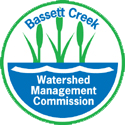News
Will our “hibernation” offer respite to our waters?
Fri, Nov 20, 2020I fondly remember teaching first graders about plant and animal winter survival adaptations, such as hibernation and dormancy. This year in Minnesota, people will be more or less hibernating right along with those plants and animals. To beat COVID, we know it’s best to limit our physical contact with each other, so a lot of us will be home for the holidays, whether we like it or not.
Staying home and slowing down doesn’t come naturally for many in our country. The U.S. embraces a fast-paced society. It’s almost a point of pride to brag about how busy we are and how little time we have to relax, perhaps because it makes us sound successful and feel important.
However, accepting this rather forced hibernation may offer a healthy perspective. For example, Denmark is consistently one of the happiest nations in the world in spite of a wet, chilly climate where it rains nearly half the year. It seems that Danish people are experts at hunkering down and embracing a “hygge” (pronounced “hue gah”) lifestyle, which loosely translates to: cozy, content, celebrating the small moments in life that reinforce comfort, relaxation, being centered, and letting go of the hectic world. The idea of hygge is as fundamental to Danes as freedom is to Americans.
Besides gaining a new perspective, another upside is that nature benefits from a slower pace in our communities. Reports from all over the world indicate that after the outbreak of COVID-19, environmental conditions including air quality and water quality in rivers are improving and wildlife is showing positive trends.
As I look toward the winter season, my hope is that a slower pace of life with fewer people out and about can also slow the excessive use of salt. Currently, tiny Bassett Creek watershed has six of the fifty Minnesota waters that are “impaired” for salt, meaning these waters exceed state standards due to high concentrations of salt. If you’re wondering how our waters got this way, consider that it only takes a teaspoon of salt to pollute five gallons of water. And an estimated 365,000 tons of road salt is applied in the Twin Cities metro area each year.
We all need to realize that more salt doesn’t mean more safety. A general rule of thumb is to space the salt granules about three inches apart. Any more than that only adds unnecessary expense to the business owners—and the surrounding environment, too, because that salt will likely find its way to nearby waters when the snow melts.
Excessive salt negatively impacts everything from the health of our soils, plants, fish, insects, pets, and wildlife to accelerating infrastructure deteriorati

